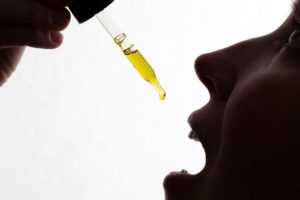Cannabinoids for Endometriosis
Cannabinoids have captured widespread attention, becoming a topic of discussion for many. Derived from the hemp plant, these compounds are linked to a range of attributes. Notably, they are believed to mitigate cramps, diminish inflammation, alleviate pain, and induce a sense of calmness. These effects, which herbal extracts pledge, are attributed to their interaction with the body’s endocannabinoid system.
Today, I aim to delve into the complexities of this intricate system, exploring its functioning and how external factors can influence it.
Furthermore, I will elucidate how the body manufactures its own pain-relieving agents, referred to as endocannabinoids.
What is the Endocannabinoid System?
Back in 1992, scientists at the National Institute of Mental Health were the pioneers who first uncovered the existence of the endocannabinoid system (ECS) [1].
Subsequent years and decades saw significant strides in scientific understanding, shedding light on the intricacies of this complex system.
Here is what we already comprehend about it:
- The ECS is present in every individual, as well as in many animals.
- It operates through 2 primary receptors within the body, known as CB1 and CB2 [2].
- Both internally produced substances, and those introduced from external sources interact with the ECS [1].
- The endocannabinoid system exerts influences over the central nervous and immune systems [3].
This is How the Endocannabinoid System is Activated
The captivating system relies on the engagement of 2 distinct receptor types, essentially acting as locks that can only be opened by specific keys. These keys are represented by CB1 and CB2 receptors. They are dispersed throughout the body, each type with its own preferred location. CB1 receptors are predominantly concentrated in the brain and central nervous system [4].
When cannabinoids such as tetrahydrocannabinol (THC) are consumed, CB1 receptors come into play, giving rise to psychoactive effects, often referred to as the “high.” On the contrary, CB2 receptors are less widespread and are mainly found in immune cells and selected neurons [4].
Although ongoing research aims to uncover additional tissues that might also be influenced through receptors, our current knowledge is still unfolding.
Yet, at present, we have only unveiled the “locks.” The corresponding “keys” are cannabinoids. These are chemical messengers that can be introduced from external sources or generated within the body itself. Scientists differentiate between endogenous and exogenous forms of cannabinoids.
Good to Know!
I understand your curiosity about the functions of the endocannabinoid system within the body. Indeed, there remain numerous enigmas to unravel regarding the ECS. Nevertheless, experts speculate that its impact extends to various physiological aspects, encompassing digestion, metabolism, sleep, appetite, mood, and memory. Indications suggest a potential connection between this intricate system and crucial factors like inflammation, pain, and immune responses [1]. Given these implications, there exists a fervent pursuit of understanding how cannabinoids could potentially provide aid to patients. Intensive research is underway to explore the therapeutic possibilities this system might offer.
Good to Know!
What is truly captivating is the capacity to positively influence your endocannabinoid system through a well-balanced lifestyle in moderation. Researchers have ascertained that adhering to a nourishing diet with a harmonized omega-3 to omega-6 ratio, participating in weekly exercise, and embracing meditation therapy can genuinely make an impression on the system’s dynamics [5].
Endogenous Cannabinoids
Cannabinoids play a pivotal role in activating the endocannabinoid system and can yield desirable outcomes. This process is exemplified by endocannabinoids, which your body produces naturally. These compounds are reputed to exert highly specific effects on mood, appetite, sleep, and more. Termed endocannabinoids, they originate from fatty acids within your body [1].
The following endocannabinoids have been subject to thorough exploration:
- Anandamide: The substance holds the distinction as the first discovered endocannabinoid [1].
- It boasts analgesic properties and appetite-stimulating effects. Intriguingly, it shares similarities with tetrahydrocannabinol [6]. Anandamide engages the brain’s reward system, evoking feelings of pleasure [1]. The endocannabinoid system governs the production timing of anandamide. For instance, evidence suggests that its release escalates after physical activity and exercise, contributing to the pain-relieving effects of such exertion [7].
- 2-Arachidonylglycerol (2-AG): This tongue-twisting compound activates both CB1 and CB2 receptors [1]. 2-AG is reputed for its anti-inflammatory and analgesic attributes, as well as its ability to promote bone growth [8.]
Endocannabinoids are generated by your body on an as-needed basis, preserving their availability for critical moments. Anandamide production is initiated within tissues and cell membranes, guided by the body’s cues. Additional endocannabinoids have also captured researchers’ attention. While anandamide and 2-arachidonylglycerol (2-AG) hold significance, there is much to unravel regarding other compounds of this kind [1].
Exogenous Cannabinoids
Phytocannabinoids, known as exogenous cannabinoids, hail from plants and likewise interact with the endocannabinoid system [9]. Prominent examples include tetrahydrocannabinol (THC) and cannabidiol (CBD), both derived from the hemp plant and capable of eliciting physiological effects.
Divergence arises between THC and CBD in terms of their impact. THC triggers intoxicating sensations, while CBD does not. As a result, cannabidiol is under intensive investigation, and numerous dietary supplements featuring CBD are available on the market. It is crucial, however, that these products contain a maximum of 0.2% THC content to prevent intoxicating effects. Adhering to this stipulation ensures that CBD full-spectrum products are legally obtainable and consumable in Germany [10].
Cannabinoids and Endometriosis: Current Research Status
In the realm of scientific exploration, an intriguing study has delved into the intricate connection between endocannabinoids—naturally produced by the body—and their association with endometriosis.
Researchers are positing a hypothesis that these substances might exert a pain-modulating influence. The intricacies of pain control mechanisms in relation to endometriosis remain a subject necessitating further research. A pivotal contribution to this discourse has been made through a detailed examination of the endocannabinoid 2-AG (2-arachidonoylglycerol). Conventionally, it has been assumed that this compound binds to specific receptors situated on nerve cell membranes, thus influencing pain perception. The prevailing notion suggests that heightened concentrations of 2-AG could potentially attenuate pain sensations [11]. Nevertheless, the findings from the particular study took an unexpected trajectory [12].
Endocannabinoids and Pain in Endometriosis
The endocannabinoid system’s involvement in endometriosis remains intricate and incompletely understood. However, there seem to be intriguing connections poised for further exploration in the forthcoming years.
 Instead of gauging endocannabinoid concentrations in the bloodstream, the study leaders opted to directly measure them within the abdominal cavity. Simultaneously, meticulous pain logs were maintained in collaboration with endometriosis patients. This approach unveiled a distinct correlation between heightened abdominal pain and elevated endocannabinoid concentrations. Yet, the revelations did not stop there. The study also assessed tissue inflammation, a natural occurrence in the context of the condition, utilizing inflammatory markers. A significant elevation of these markers was observed in individuals who experienced pronounced pain. The central findings of this research can be summarized by the supposition that endocannabinoids stimulate specific cells within the immune system.
Instead of gauging endocannabinoid concentrations in the bloodstream, the study leaders opted to directly measure them within the abdominal cavity. Simultaneously, meticulous pain logs were maintained in collaboration with endometriosis patients. This approach unveiled a distinct correlation between heightened abdominal pain and elevated endocannabinoid concentrations. Yet, the revelations did not stop there. The study also assessed tissue inflammation, a natural occurrence in the context of the condition, utilizing inflammatory markers. A significant elevation of these markers was observed in individuals who experienced pronounced pain. The central findings of this research can be summarized by the supposition that endocannabinoids stimulate specific cells within the immune system.
This very process potentially triggers the pain linked to the inflammatory response. In this light, endocannabinoids appear to exhibit a dual nature. On one hand, they seemingly possess the ability to alleviate pain, while on the other, they engage the immune system, potentially exacerbating pain sensations [10]. Ultimately, a deeper comprehension of these complex dynamics could aid not only in the enhanced diagnosis of endometriosis but also in facilitating more effective treatment strategies.
How THC and CBD Might Assist with Endometriosis?
 The endocannabinoid system plays a pivotal role in both the proper function and malfunction of the uterus. In a rat experiment, it was revealed that the body forms nerve fiber branches to supply endometrial growth. It is speculated that CB1 receptors could be specifically located in this area [11]. These findings suggest that the endocannabinoid system is implicated in both the connection between unwanted growths and the nervous system and the emergence of endometriosis-related pain. The use of exogenous cannabinoids to alleviate endometriosis pain has been explored previously [13].
The endocannabinoid system plays a pivotal role in both the proper function and malfunction of the uterus. In a rat experiment, it was revealed that the body forms nerve fiber branches to supply endometrial growth. It is speculated that CB1 receptors could be specifically located in this area [11]. These findings suggest that the endocannabinoid system is implicated in both the connection between unwanted growths and the nervous system and the emergence of endometriosis-related pain. The use of exogenous cannabinoids to alleviate endometriosis pain has been explored previously [13].
However, direct patient studies are somewhat lacking. Nevertheless, some researchers hold the view that targeting the endocannabinoid system holds promise for treating endometriosis-related pain [14]. As previously mentioned, this intricate system can be influenced by the external application of cannabinoids. Specifically, both THC and CBD are worth considering in this context.
THC in the Context of Endometriosis
In a survey involving endometriosis patients aged between 18 and 45 years, 484 responses were gathered via an online platform. Among these respondents, 76% had employed self-administered strategies to manage their endometriosis symptoms over the past 6 months.
Of note, cannabis was chosen as a strategy by 13% of these women. They reported experiencing notably reduced pain as a result. Additionally, improved sleep quality and relief from nausea and vomiting were also noted.
However, it is important to weigh the potential downsides when considering tetrahydrocannabinol. Undesirable effects such as fatigue, reduced concentration, or general cognitive impairment must be carefully considered. Given THC’s intoxicating effect, its usage could impact activities such as operating machinery or driving [15].
CBD for Endometriosis
Earlier studies have indicated that cannabidiol may possess analgesic, anti-inflammatory, anxiolytic, and sedative properties [16, 17, 18, 19]. Consequently, these extracts could hold potential for endometriosis patients. However, studies that provide clear actionable recommendations for those affected are still somewhat lacking. Nevertheless, the option of using CBD oil remains, allowing individuals to personally explore whether symptoms improve with its use.
Cannabinoids and Endometriosis: Legal Aspects
In this country, doctors have been authorized to prescribe cannabis since 2017. Cannabis in the form of dried flowers or extracts can be prescribed for medical use. Furthermore, there are pharmaceutical options containing dronabinol and nabilone, active ingredients that are partially or fully synthetic variations. However, to qualify for a cannabis prescription, one of the following conditions must be met [20]:
- Lack of recognized and medically standardized treatment options.
- Physician assessment of unmanageable side effects with standard therapy.
- Reasonable assumption of positive impact on condition progression or symptoms through prescribed cannabinoids.
Contrasting tetrahydrocannabinol, cannabidiol is readily accessible and can be legally consumed if its THC remains below 0.2%, and it is a full-spectrum oil – meaning CBD content aligns with the plant’s composition [8].
Incorporating CBD into Daily Life
Acquiring THC from the store is not feasible; however, cannabidiol is an exception. A broad range of options is now available in pharmacies or online. You will observe that CBD oil products vary in potency, indicated by different percentages.
Generally, higher percentages demand fewer drops for potential effect. Yet, it is crucial to recognize that what you are obtaining is a dietary supplement, not a medicine, and no promises of effect or cure can be guaranteed. The decision to explore the potential of cannabidiol rests with you.
Various forms of CBD are at your disposal:
- CBD Oil
- CBD Capsules
- CBD Tablets
- CBD Vape Concentrates
- CBD Tinctures
- CBD-Infused Foods
- CBD Tea
- CBD Creams
- CBD Globules

Due to its potency and ease of use, many opt for CBD oil. The application is straightforward – place a few drops under the tongue, wait a few minutes, and then swallow. The oral mucosa efficiently absorbs the herbal extracts.
Note: When acquiring a CBD product, you are purchasing a consumable. Occasionally, these oils are labeled as cosmetics to circumvent stringent food regulations. However, this can lead to receiving a product that does not meet the legal requirements, potentially due to excessive THC content, in the worst-case scenario.
Good to Know!
The World Health Organization (WHO) confirms that cannabidiol (CBD) is generally well-tolerated and does not pose a risk for abuse [21].
Common side effects may include dry mouth, drowsiness, or dizziness. In such instances, it is advisable to consider a slight reduction in dosage.
CBD has the potential to interact with the body’s natural enzymes, affecting the potency of certain medications. This interaction has been particularly noted with acid inhibitors, anticoagulants, pain relievers, and neuroleptics.
Given these considerations, it is recommended to engage in a discussion with your healthcare provider before incorporating CBD oil into your routine.
References
- Medical Cannabis Verein Schweiz (medcan.ch): Medizin – Endocannabinoid-System
- Pertwee RG. Pharmacology of cannabinoid CB1 and CB2 receptors. Pharmacol Ther. 1997;74(2):129-80. doi: 10.1016/s0163-7258(97)82001-3. PMID: 9336020.
- Joshi N, Onaivi ES. Endocannabinoid System Components: Overview and Tissue Distribution. Adv Exp Med Biol. 2019;1162:1-12. doi: 10.1007/978-3-030-21737-2_1. PMID: 31332731.
- Mackie K. Cannabinoid receptors: where they are and what they do. J Neuroendocrinol. 2008 May;20 Suppl 1:10-4. doi: 10.1111/j.1365-2826.2008.01671.x. PMID: 18426493.
- de Melo Reis RA, Isaac AR, Freitas HR, de Almeida MM, Schuck PF, Ferreira GC, Andrade-da-Costa BLDS, Trevenzoli IH. Quality of Life and a Surveillant Endocannabinoid System. Front Neurosci. 2021 Oct 28;15:747229. doi: 10.3389/fnins.2021.747229. PMID: 34776851; PMCID: PMC8581450.
- McFarland MJ, Barker EL. Anandamide transport. Pharmacol Ther. 2004 Nov;104(2):117-35. doi: 10.1016/j.pharmthera.2004.07.008. PMID: 15518883.
- Desai S, Borg B, Cuttler C, Crombie KM, Rabinak CA, Hill MN, Marusak HA. A Systematic Review and Meta-Analysis on the Effects of Exercise on the Endocannabinoid System. Cannabis Cannabinoid Res. 2021 Dec 3. doi: 10.1089/can.2021.0113. Epub ahead of print. PMID: 34870469.
- Tam J, Trembovler V, Di Marzo V, Petrosino S, Leo G, Alexandrovich A, Regev E, Casap N, Shteyer A, Ledent C, Karsak M, Zimmer A, Mechoulam R, Yirmiya R, Shohami E, Bab I. The cannabinoid CB1 receptor regulates bone formation by modulating adrenergic signaling. FASEB J. 2008 Jan;22(1):285-94. doi: 10.1096/fj.06-7957com. Epub 2007 Aug 17. PMID: 17704191.
- Di Marzo V, Piscitelli F. The Endocannabinoid System and its Modulation by Phytocannabinoids. Neurotherapeutics. 2015 Oct;12(4):692-8. doi: 10.1007/s13311-015-0374-6. PMID: 26271952; PMCID: PMC4604172.
- BfArM: FAQ – Häufig gestellte Fragen (FAQ)
- Idw- Informationsdienst Wissenschaft: Endometriose: Schmerzregulierung durch körpereigene Cannabinoide
- Andrieu T, Chicca A, Pellegata D, Bersinger NA, Imboden S, Nirgianakis K, Gertsch J, Mueller MD. Association of endocannabinoids with pain in endometriosis. Pain. 2021 Jul 27. doi: 10.1097/j.pain.0000000000002333. Epub ahead of print. PMID: 34001768.
- Dmitrieva N, Nagabukuro H, Resuehr D, Zhang G, McAllister SL, McGinty KA, Mackie K, Berkley KJ. Endocannabinoid involvement in endometriosis. Pain. 2010 Dec;151(3):703-710. doi: 10.1016/j.pain.2010.08.037. Epub 2010 Sep 15. PMID: 20833475; PMCID: PMC2972363.
- Bouaziz J, Bar On A, Seidman DS, Soriano D. The Clinical Significance of Endocannabinoids in Endometriosis Pain Management. Cannabis Cannabinoid Res. 2017 Apr 1;2(1):72-80. doi: 10.1089/can.2016.0035. PMID: 28861506; PMCID: PMC5436335.
- Sinclair J, Smith CA, Abbott J, Chalmers KJ, Pate DW, Armour M. Cannabis Use, a Self-Management Strategy Among Australian Women With Endometriosis: Results From a National Online Survey. J Obstet Gynaecol Can. 2020 Mar;42(3):256-261. doi: 10.1016/j.jogc.2019.08.033. Epub 2019 Nov 10. PMID: 31722852.
- Hammell DC, Zhang LP, Ma F, Abshire SM, McIlwrath SL, Stinchcomb AL, Westlund KN. Transdermal cannabidiol reduces inflammation and pain-related behaviours in a rat model of arthritis. Eur J Pain. 2016 Jul;20(6):936-48. doi: 10.1002/ejp.818. Epub 2015 Oct 30. PMID: 26517407; PMCID: PMC4851925.
- Cuñetti L, Manzo L, Peyraube R, Arnaiz J, Curi L, Orihuela S. Chronic Pain Treatment With Cannabidiol in Kidney Transplant Patients in Uruguay. Transplant Proc. 2018 Mar;50(2):461-464. doi: 10.1016/j.transproceed.2017.12.042. PMID: 29579828.
- Blessing EM, Steenkamp MM, Manzanares J, Marmar CR. Cannabidiol as a Potential Treatment for Anxiety Disorders. Neurotherapeutics. 2015 Oct;12(4):825-36. doi: 10.1007/s13311-015-0387-1. PMID: 26341731; PMCID: PMC4604171.
- Shannon S, Lewis N, Lee H, Hughes S. Cannabidiol in Anxiety and Sleep: A Large Case Series. Perm J. 2019;23:18-041. doi: 10.7812/TPP/18-041. PMID: 30624194; PMCID: PMC6326553.
- Kassenärztliche Bundesvereinigung: Cannabis verordnen
- WHO: CANNABIDIOL (CBD)
Hinterlasse uns gerne einen Kommentar, wenn du schon Erfahrungen mit Cannabinoiden gesammelt hast.
- Increased Risk of Stroke Due to Endometriosis - 4. October 2023
- Increased Risk of Stroke Due to Endometriosis - 4. October 2023
- Low-Histamine Diet - 6. June 2023
